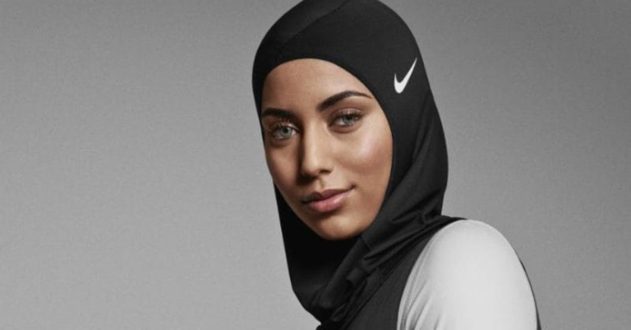Why is it that we associate revealing our bodies with liberation and covering it up with oppression?
Sixteen-year-old Je’Nan Hayes of Maryland recently had to sit out a basketball game because she wears a hijab (headscarf), and according to a rarely enforced rule, was required to provide prior documentation that she did so for religious reasons, even though she had played 24 games so far without an objection.
Meanwhile, Nike is facing backlash online for its Pro Hijab—a one-piece headscarf made of lightweight and breathable mesh—designed for those Muslim female athletes who wish to cover their heads.
What is it about the hijab that elicits such negative responses?
Critics of the Pro Hijab assert that a hijab is a tool of oppression. One Twitter user wrote: “#Nike cashing in on the subjugation, domination, and oppression of women.” Yet another tweeted: “@Nike has decided to capitalize off Islamic patriarchy by putting their brand on a chastity helmet.”
These critics fail to consider that Nike’s Pro Hijab, meant for athletes, is marketed to a group of women, who by virtue of their involvement in professional sports, are a group who are already defying gender expectations and norms. Not all Muslim women wear a headscarf, but those who do, why should they be constrained in their ambitions simply because of a scarf? In fact, for many women, the headscarf can be liberating as it allows them to focus on something other than their appearance.
In my work as a sociology professor and as editor of two books about embodiment, culture and globalization, I see the real and more urgent questions as: Why is it that we associate revealing our bodies with liberation and covering it up with oppression? And, how does this kind of thinking hide the real sources of oppression and liberation from us?
But, very importantly, if our concern about the Nike Pro Hijab (or any hijab) is truly with women’s oppression or subjugation, then why not address the issue of female athletes being overly sexualized in the media? Some of the first images of Lindsey Vonn to show up in a Google search are of her in a bikini or less. The same is true for Danika Patrick. There is nothing inherently wrong with a bikini. But if we want to truly address a culture of oppression, why not start with the effect of such images on young girls, or on the athletes themselves? Plenty of research has shown that while images of women playing sports make young girls feel positively, images of scantily dressed women (even when they are athletes), make them feel much worse about themselves and their bodies.
Even elite female athletes themselves struggle with their body image since having an athlete’s body (read: muscular and strong) is often seen to be at odds with a “feminine” body (read: small and delicate). Maria Sharapova, who was adored for her feminine body, famously revealed, “I always want to be skinnier with less cellulite. I think that’s every girl’s wish.” Serena Williams, on the other hand, who has been mocked for having muscular arms and a strong physique has spoken out about the toll this has taken on her and openly discusses her long journey toward accepting her body. But many other female athletes continue to battle with their body image, being forced to choose between athleticism and femininity.
In light of the struggles that many women—athletes and non-athletes—face; struggles that are compounded by the overt sexualization of women and girls in this culture, why are we so convinced women athletes who wish to cover their heads are oppressed? Instead, our indignation should be directed at the increasing rates of body image disorders in girls as young as 9 or 10. We should all be angry when young girls and women believe their worth is defined by how their bodies look and not what their bodies can accomplish. And we should all be sad when even the most talented female athletes continue to be scrutinized for what their bodies look like and not what they have accomplished.
In that sense, the focus on Nike’s Pro Hijab isn’t all that different—the women who want to compete wearing a hijab are also being judged for what they wear and not what they have to offer as athletes. Perhaps we should consider that what might be making us uncomfortable about them is that they refuse to give in to the cultural demands of sexualization of female athletes.
Nike’s Pro Hijab is not a tool of subjugation any more than a tennis uniform is. If we are truly interested in addressing oppression of female athletes, we need to look at the larger cultural norms that make it acceptable for female athletes to be judged on their appearance rather than their ability and that tell female athletes, in no uncertain terms, they need to choose between femininity and athleticism.
Afshan Jafar is an associate professor of sociology at Connecticut College and a Public Voices fellow with the OpEd Project. She is the author of “Women’s NGOs in Pakistan,” and the co-editor for “Bodies without Borders” and “Global Beauty, Local Bodies.”
Other Links:

